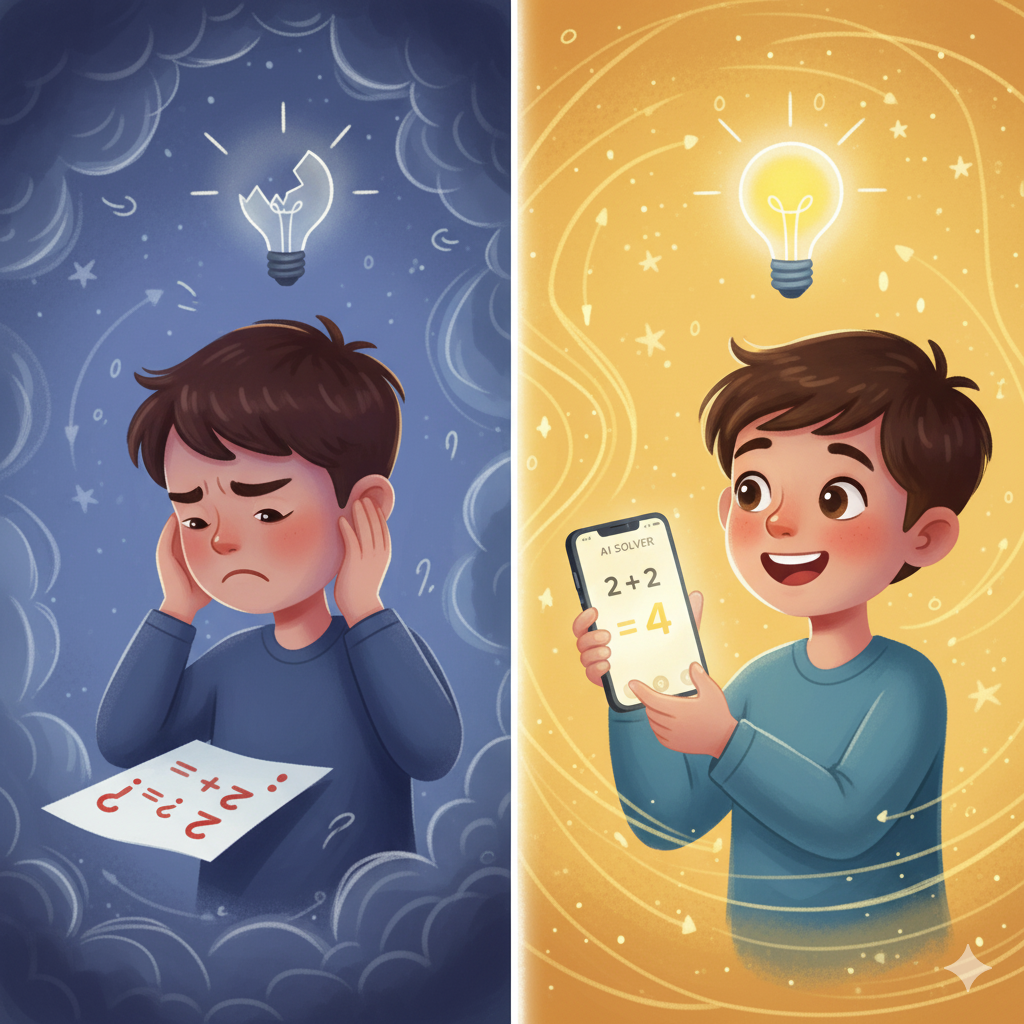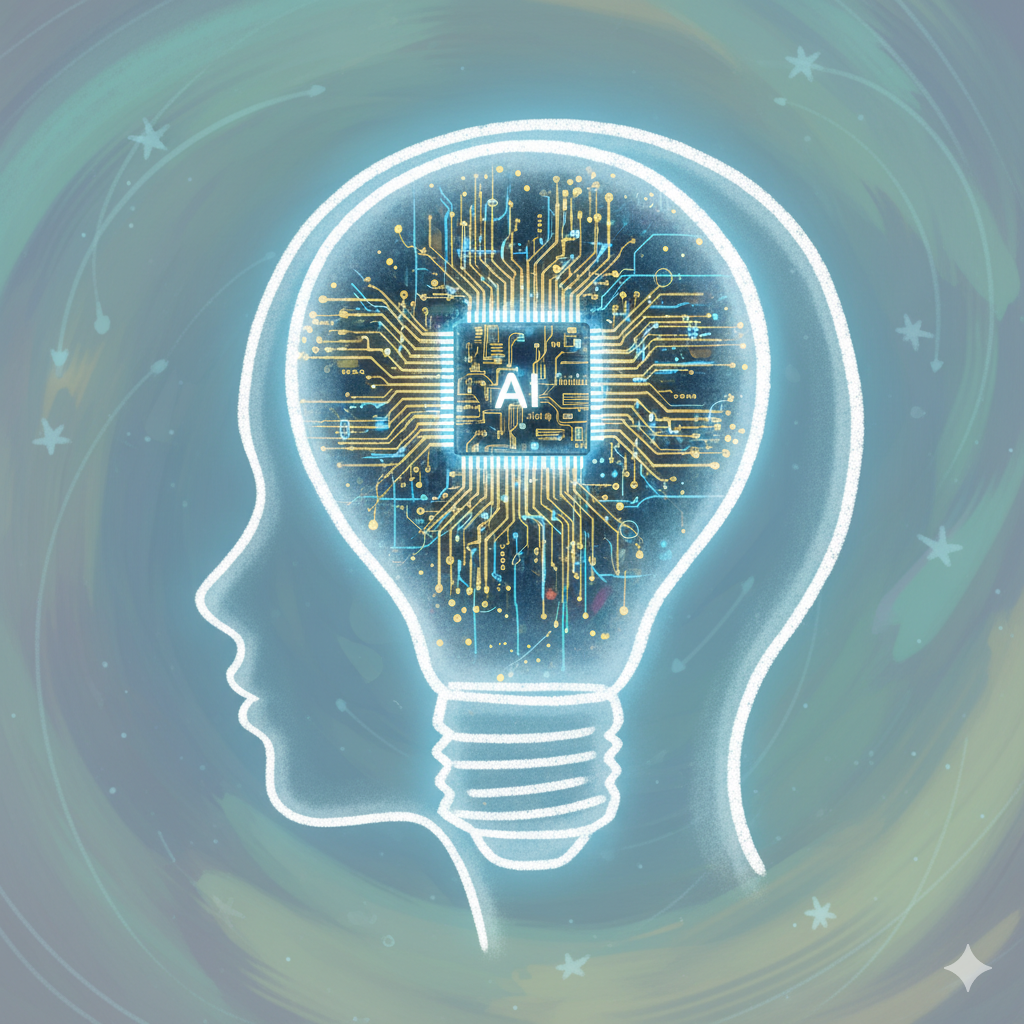It’s 8 PM on a school night. The dreaded science worksheet is staring your child down, and the frustration is mounting. In the past, this might have led to tears, a call to a friend, or a desperate plea for parental help (which often ends with you frantically Googling the phases of the moon).
But now, there’s a new solution. Your child opens an app, snaps a picture of the problem, and like magic, the complete, step-by-step answer appears. Relief washes over both of you. The homework is done. Crisis averted.
But at what cost?
This is the modern dilemma of AI-powered homework helpers. Tools like ChatGPT, Photomath, and a host of others promise assistance and learning support. But lurking beneath the surface of this convenient solution is a dangerous question: Is the AI helping your child learn, or is it simply learning for them?
The Slippery Slope from “Helper” to “Crutch”
The transition from using AI as a tool to using it as a crutch is deceptively easy. It often starts innocently:
- “I just need to check my answer.”
- “I don’t understand the first step, so I’ll get it from the app.”
- “Everyone else in class uses it to get done faster.”
The problem is that the brain learns through the struggle. The cognitive effort of wrestling with a problem, making mistakes, and finding a path to a solution is what forges strong neural pathways. When an AI removes that struggle, it bypasses the learning process entirely. The homework gets done, but the understanding never takes root.

The 3 Silent Costs of AI Homework Help
The real damage isn’t a zero on the assignment; it’s what happens to your child’s long-term academic development.
1. The Illusion of Understanding
When a child sees a solution generated by an AI, it can feel like learning. The steps are logical, the answer is correct. They might even nod along and say, “Oh, I get it now.” But this is often a passive reception of information, not active comprehension. When test day comes and the AI safety net is gone, the illusion shatters, revealing the gaps in knowledge that were never filled.
2. The Erosion of Critical Thinking and Problem-Solving
Math isn’t just about getting the right answer; it’s about learning the process of logical deduction. Writing isn’t just about a finished essay; it’s about organizing thoughts, constructing arguments, and finding your voice. By outsourcing the “how” to an algorithm, children miss out on the fundamental practice of thinking critically. They become solution-focused, not process-oriented, which is a severe disadvantage in higher education and life.
3. The Surge in Academic Dishonesty (Without “Copying”)
This isn’t the old-fashioned cheating of glancing at a neighbor’s paper. This is a gray area that many students don’t even perceive as wrong. They argue, “The AI explained it to me, so it’s my work now.” However, submitting work generated or heavily scaffolded by AI without attribution is a form of plagiarism. Schools are still catching up to this, but the consequences for academic integrity are very real.
How can you tell if the homework helper has become a homework doer? Watch for these signs:

How to Spot an AI Overdependence: A Checklist for Parents
- They can’t explain their work. Ask them to walk you through a “completed” problem. If they stammer, get defensive, or can’t articulate the reasoning, it’s a red flag.
- Homework is done suspiciously fast and flawlessly. If your child who usually struggles with math is suddenly finishing complex assignments in minutes with perfect accuracy, it’s worth investigating.
- They get anxious or angry when they can’t access the app. If the tool becomes a source of stress when it’s unavailable, it’s no longer a tool—it’s a dependency.
- Their in-class performance doesn’t match their homework grades. A stark contrast between low quiz scores and perfect homework is one of the clearest indicators.
From AI Crutch to AI Tool: A Parent’s 5-Step Guide
Banning technology is rarely effective. The goal is not to eliminate the AI, but to teach you child how to use it responsibly. Here’s how:
- Reframe the Purpose of the Tool: Have a direct conversation. “This app is like a powerful calculator. It’s for checking your work after you’ve tried it yourself, not for doing the thinking for you.” Set a ground rule: No AI until the pencil has hit the paper.
- Embrace the “Frustration Zone”: Teach your child that struggle is not failure; it’s the feeling of their brain growing. Normalize the process of getting stuck and trying different approaches. Praise the effort, not just the correct answer.
- Use the Socratic Method with AI: If your child is stuck, guide them to use the AI as a tutor. Instead of typing, “Solve this problem,” teach them to ask:
- “Can you explain the concept of [topic] in simple terms?”
- “I’m stuck on step 2 of this type of problem. Can you give me a hint without giving me the answer?”
This transforms the AI from an answer-bot into a interactive guide.
- Request “Show Your Work” (From the AI and Your Child): Many AI solvers provide step-by-step solutions. If your child uses one, insist that they write out those steps themselves on their paper and, crucially, write a one-sentence explanation of what happened in each step. This forces active engagement.
- Stay in the Loop with Teachers: Be proactive. Email the teacher and ask, “What is the school’s policy on AI homework helpers? How would you like students to use them appropriately?” This shows you’re an ally in your child’s education and keeps you informed.
The Final Answer
AI is not the enemy of education. In fact, when used wisely, it can be a powerful ally for personalized learning. But it must remain in the role of an assistant—not the protagonist in your child’s academic journey.
The goal of education is to build a capable, independent, and critical thinker. By setting clear boundaries and teaching mindful usage, we can ensure that these powerful tools are building up our children’s minds, rather than quietly doing the work for them.
The true measure of learning isn’t a finished assignment; it’s the ability to tackle the next one alone.